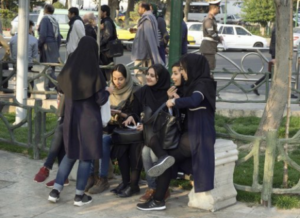opendemocracy: In the early 1990s, Iran had one of best family planning programmes in the developing world. From 1980 to 2010, it managed to cut the average number of children each woman bore from six and a half to two. But these gains have since been reversed and all Iranian women are suffering under regressive legislation passed in 2015. Though, of course, some are suffering more than others.
As a sexual and reproductive health and rights advocate, I have been working with marginalised women’s collectives in underserved districts of Tehran for five years. I have seen how laws like The Comprehensive Population and Exaltation of Family Bill (or Bill 315, as it is known) most directly and severely affect the poorest women: sex workers, those with drug abuse issues, rural, migrant and ethnic minority women – those who were highly dependent on state provision of contraception.
The first call for a reversal of Iran’s de facto two-child policy came in 2006, when President Ahmadinejad said the population should increase from 70 to 120 million, with women working less and devoting more time to their “main mission” of raising children. In 2012, Supreme Leader Ayatollah Khamenei saidthe policy made sense 20 years ago, “but its continuation in later years was wrong,” because the country would face an aging and declining population “if the birth-control policy continues.”
And so Bill 315 was passed by Iran’s Islamic Consultative Assembly on November 2015, by 289 men and nine women. With it, a new chapter in family planning began, with women’s bodies positioned as a battleground in the fight for Iran’s future. This legislation aims to boost population growth by encouraging early marriage and repeated childbearing. It does this in a number of ways that disempower women and give them less say over their bodies and therefore their lives.
“With Bill 315 a new chapter in family planning began, with women’s bodies a battleground in the fight for Iran’s future.”
The law mandates that all private and public entities give hiring priority, in sequence, to men with children, married men without children, and married women with children. Articles 10 and 16 prevent unmarried men and women from assuming teaching positions or obtaining licenses to practice family law.
Articles 17 and 18 call for the “de-judicialisation” of family disputes with a view to preventing divorce with “peaceful settlements” through a specialised police unit with “married, mature and well trained officers”. The law shows no regard for whether such settlements could put women at risk of re-victimisation in abusive relationships.
It also creates new barriers to divorce, described by Article 21 as “an anti-value with socially harmful consequences on spouses and children”. Articles 19 and 20 incentivise lawyers and judges to favour reconciliations with special bonuses. This adds an already discriminatory civil code where women (but not men) must provide reasons for divorce, like hardships that would make continuing marriage intolerable.
In practise, Bill 315 is an all-encompassing denial of women’s agency and their rights to decide freely whether and when to marry, divorce, or have children. It codifies women’s discrimination in the workplace. Family planning funding, which had significantly increased women’s access to modern contraception over the last two decades, was cut not long after the law came into force.
“It is an all-encompassing denial of women’s rights to decide freely whether and when to marry, divorce, or have children.”
The government has since halted all free family planning services. Family planning information has been removed from health centres, which are no longer allowed to distribute contraceptive pills and condoms, insert IUDs (intrauterine devices) or perform permanent contraceptive surgeries.
Doctors and nurses are obligated to encourage women to continue unwanted pregnancies and have the large families our grandmothers were forced to have. At school, classes on the need for population controls have been replaced by those encouraging marriage and bountiful reproduction.
Since the physical, mental, and emotional labour around contraception is still “women’s burden” in Iran, Bill 315 has significant impacts on women’s lives. But of course, it will not affect all Iranian women in the same way.
Wealthier women can still buy contraception and get abortions on the thriving black market that has developed under Bill 315. For those who can pay for it, surgical abortion for an early pregnancy is available for between 10,000,000 and 40,000,000 Rial ($200-400), depending on where you go.
“Wealthier women can still buy contraception and get abortions on the thriving black market that has developed under Bill 315.”
With consistent conservative attacks on women’s health and reproductive rights, responses from women’s rights groups need to take into account the different experiences of different women; too often Iranian feminists ignore the dimensions of class and race in the complex matrix of power relations that shape inequality.
A social researcher and feminist working across Iran’s north, northeast and central rural areas told me that women are particularly suffering from cuts to free contraception in these areas, where “the economy of marginalised and poor villages is totally collapsed as the result of neoliberal economic policies.”
“People are facing shortage of water, famine and starvation in many areas,” she explained, asking: “In this situation, how can a woman manage her fertility with no access to affordable service as well as no power of negotiation with her husband?”
Iran’s family planning program was one to be proud of, but the political climate towards women’s sexual and reproductive health and rights has become increasingly aggressive and oppressive. The population might be improving in terms of numbers, but the lives of women responsible for this gain are being diminished even further.


